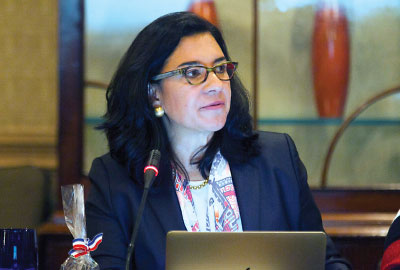Suicide Attempts Rise, Yet Many Do Not Receive MH Services
Abstract
Logistical and financial barriers stand between patients who attempt suicide and the care they need.
Between 2008 and 2019, the annual rate of suicide attempts per 100,000 adults in the United States rose from 481.2 to 563.9, yet the rate at which individuals who attempt suicide receive mental health services has not kept pace, according to a study in JAMA Psychiatry.

Policies that improve the social conditions in which people live can help curb the rise in suicide, says Tanner Bommersbach, M.D., M.P.H.
Tanner Bommersbach, M.D., M.P.H., a psychiatry resident at Yale School of Medicine, and colleagues analyzed data from 484,732 adults who participated in the National Survey of Drug Use and Health (NSDUH) from 2008 to 2019. They defined suicide attempts as self-reported efforts to kill one’s self in the past 12 months and examined trends in past-year use of mental health services among participants who reported past-year suicide attempts. They also analyzed data about the participants’ reasons why they did not receive care.
Among adults who attempted suicide, 34.8% (2010 to 2011) to 45.5% (2018 to 2019) reported needing mental health services but did not obtain them. From 2008 to 2019 there were no significant changes in the likelihood of having any mental health outpatient, inpatient, or medication services or changes in the use of substance use treatment services. The number of participants who reported not knowing where to go for treatment, lacking transportation, or reporting that services were too far away increased over the course of the study.
Bommersbach told Psychiatric News that the results demonstrate a need for broad efforts to address mental health. “While access to care for individuals at high-risk is critical, mental health services alone are unlikely to curb the rise in suicide,” Bommersbach said. “We must also focus on community-based interventions and broad social policies that improve the social conditions in which people are living.”
Study researcher Taeho Greg Rhee, Ph.D., an assistant professor adjunct of psychiatry at Yale School of Medicine, added that it is important for health professionals to step up in helping patients get the care they need. “Improving access to care and addressing unmet psychiatric and medical needs among individuals with suicidal ideation or suicide attempts should be clinical goals across diverse settings,” Rhee said. “We need to engage with and educate patients more actively so that they can get the help they need when they face a crisis, including suicidal ideation or suicide attempts.”

Maria A. Oquendo, M.D., Ph.D., suggests partnering with schools and communities to offer education about mental health.
Although there is a shortage of psychiatrists and mental health professionals, psychiatrists among the APA membership can play a role in community outreach, said suicide expert Maria A. Oquendo, M.D., Ph.D., the Ruth Meltzer Professor and Chair of Psychiatry at the Perelman School of Medicine at the University of Pennsylvania and past president of APA, who was not involved in the research.
“Organizing district branches to partner with schools and communities to offer educational sessions about mental health and how to access care in the community would be useful,” Oquendo said.
Social media campaigns, initiatives on college campuses, unemployment benefit programs, and financial supports may offer other ways for reaching high-risk populations, Bommersbach and colleagues wrote. Continued expansion of telehealth-based interventions for substance use, especially for medications for opioid use disorder in rural areas, may also present a way to engage more people in treatment, they added.
The researchers wrote that the results underscore the importance of efforts to improve access to insurance and enforcement of mental health parity.
Oquendo explained that a lack of parity serves as a barrier to care, even when patients do have insurance.
“Despite being a law, many insurers still have discriminatory policies that result in mental health clinicians not being paid for their work, thus deterring [these professionals] from accepting insurance,” Oquendo said.
This study was supported by the National Institute on Aging; the National Institute of Mental Health; and the Institute for Collaboration on Health, Intervention, and Policy of the University of Connecticut. ■



